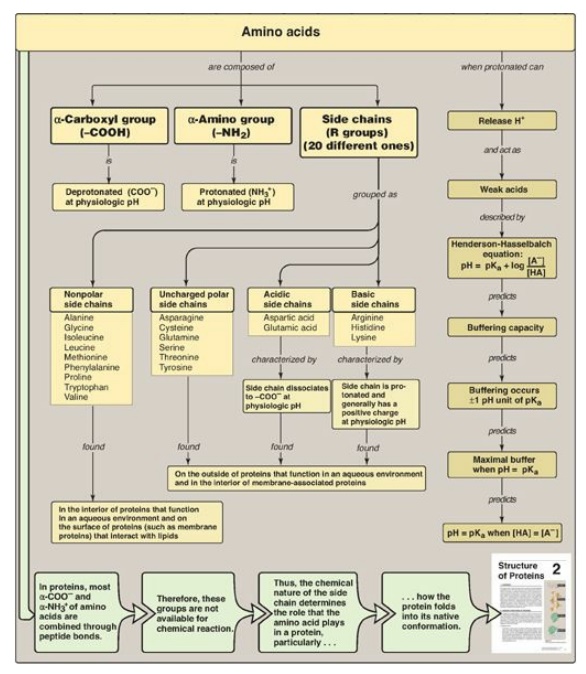Concept Maps
| Home | | Biochemistry |Chapter: Biochemistry : Amino Acids
Students sometimes view biochemistry as a list of facts or equations to be memorized, rather than a body of concepts to be understood. Details provided to enrich understanding of these concepts inadvertently turn into distractions.
CONCEPT MAPS
Students sometimes view
biochemistry as a list of facts or equations to be memorized, rather than a
body of concepts to be understood. Details provided to enrich understanding of
these concepts inadvertently turn into distractions. What seems to be missing
is a road map—a guide that provides the student with an understanding of how
various topics fit together to make sense. Therefore, a series of biochemical
concept maps have been created to graphically illustrate relationships between
ideas presented in a chapter and to show how the information can be grouped or
organized. A concept map is, thus, a tool for visualizing the connections
between concepts. Material is represented in a hierarchic fashion, with the
most inclusive, most general concepts at the top of the map and the more
specific, less general concepts arranged beneath. The concept maps ideally
function as templates or guides for organizing information, so the student can
readily find the best ways to integrate new information into knowledge they
already possess.

Figure 1.13 Symbols
used in concept maps.

Figure 1.14
Key concept map for amino acids.
A. How is a concept map constructed?
1.Concept boxes and links: Educators define concepts as
“perceived regularities in events or objects.” In the biochemical maps,
concepts include abstractions (for example, free energy), processes (for
example, oxidative phosphorylation), and compounds (for example, glucose
6-phosphate). These broadly defined concepts are prioritized with the central
idea positioned at the top of the page. The concepts that follow from this
central idea are then drawn in boxes (Figure 1.13A). The size of the type
indicates the relative importance of each idea. Lines are drawn between concept
boxes to show which are related. The label on the line defines the relationship
between two concepts, so that it reads as a valid statement, that is, the connection
creates meaning. The lines with arrowheads indicate in which direction the
connection should be read (Figure 1.14).
2. Cross-links: Unlike linear flow charts or outlines, concept maps
may contain cross-links that allow the reader to visualize complex
relationships between ideas represented in different parts of the map (Figure
1.13B), or between the map and other chapters in this book (Figure 1.13C).
Cross-links can, thus, identify concepts that are central to more than one
topic in biochemistry, empowering students to be effective in clinical
situations and on the United States Medical Licensure Examination (USMLE) or
other examinations that require integration of material. Students learn to
visually perceive nonlinear relationships between facts, in contrast to
cross-referencing within linear text.
Related Topics
